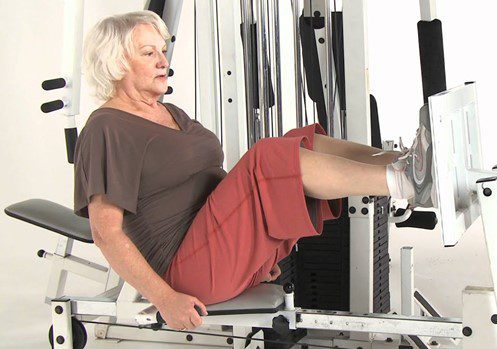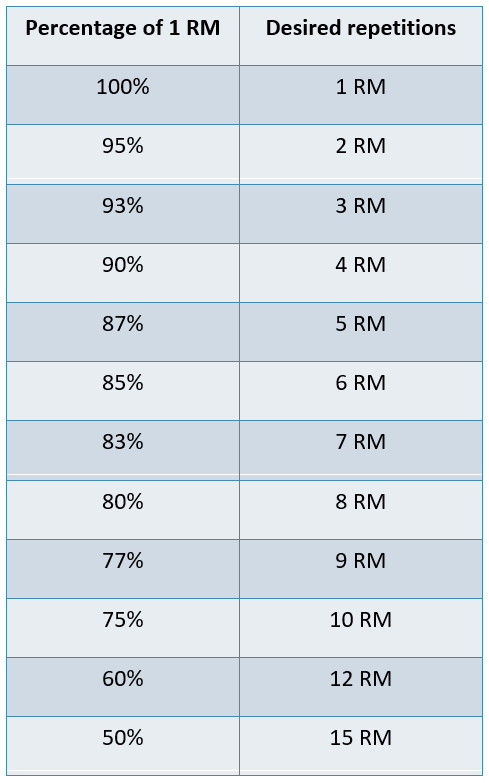Written By: Nicole Dawson, PT, PhD, GCS
 Exercise is the most important tool in a geriatric rehabilitation professional’s arsenal – by far! And unfortunately, it is still too often underutilized by many of us afraid that we will do harm through injury. By allowing this fear of injury, we are actually doing harm by not delivering an adequate dose of our most valuable intervention. Our older adult patients will not improve without our help, we must complete a comprehensive evaluation and develop an individualized exercise prescription that is appropriately dosed, monitored, and adjusted throughout the plan of care.
Exercise is the most important tool in a geriatric rehabilitation professional’s arsenal – by far! And unfortunately, it is still too often underutilized by many of us afraid that we will do harm through injury. By allowing this fear of injury, we are actually doing harm by not delivering an adequate dose of our most valuable intervention. Our older adult patients will not improve without our help, we must complete a comprehensive evaluation and develop an individualized exercise prescription that is appropriately dosed, monitored, and adjusted throughout the plan of care.
We have multiple tools available to assist with appropriate dosage of exercise. The 2 most useful are the guidelines for exercise prescription in older adults from the American College of Sports Medicine and the newly released Expert Consensus Guidelines from the International Conference on Frailty and Sarcopenia Research (ICFSR). These recommendations align well with a few keys differences – the most important being the explicit emphasis on power training in the newer guidelines. We know that older adults differential lose their type-II muscle fibers more rapidly due to sarcopenic age-related changes; therefore the ICFSR guidelines highlight the crucial need for resistance training to include this velocity-dependent mode of training to impact this unique need in our older adults.
Many therapists that I have met are intimidated by these guidelines because of “% of 1RM” phraseology and concerns of pushing the patient too hard. Prescribing strength and power training does not have to be so scary! Honestly, it is not recommended to use single-repetition maximum (RM) with older adults but rather multiple RM to ensure proper intensity during training. Table 1 outlines the relationship between the percentage of 1RM and multiple repetition max. For moderate intensity strength training, it is well-known that 60-80% of 1RM is desired, which would equate to 8 to 12RM. So, during training with our older adults, we just need to change our instructions to ask them to complete “as many repetitions as they can” of a given activity. This will allow us to gauge the current intensity and adjust the intensity from there to reach the desired intensity – easy! For example, I may begin with body-weight squats. Rather than instruct the patient to complete 3 sets of 12 or 2 sets of 20, I will instruct them to complete as many repetitions as they can. This allows me to monitor and adjust my desired dose of exercise. If I am aiming for moderate-intensity and the patient is able to complete more than 20 repetitions, she is telling me that the exercise is at a much lower intensity than moderate-intensity; therefore, I must make it more challenging for her until she can only complete between 8 to 12.
Appropriate dosage of our exercise is critical to optimizing the outcomes of the geriatric patient population. Older adults need our expertise and rely on our abilities to prescribe properly to aid in their regaining functional independence and maximize their ability to age in place. Interested in learning more on this topic? Be sure to checkout my upcoming live webinar, Exercise in Geriatric Rehabilitation.
Explore online continuing education courses from Nicole below:
Exercise in Geriatric Rehabilitation
Functional Assessment Tools in Geriatric Rehabilitation
Best Practice in Managing Patients with Dementia
Comprehensive Management of Falls in Older Adults
Visit summit-education.com for more information.
American Physical Therapy Association. Choosing Wisely. Published 2019. Accessed March 11, 2021. https://www.choosingwisely.org/societies/american-physical-therapy-association/
Avers, Dale PT, DPT, PhD, FAPTA The Value of Geriatric Physical Therapy: Excerpts from ‘We Can Do Better’, Journal of Geriatric Physical Therapy: July/September 2020 – Volume 43 – Issue 3 – p 115-119. doi: 10.1519/JPT.0000000000000275
Avers, Dale, and Rita Wong. Guccione’s Geriatric Physical Therapy E-Book. Elsevier Health Sciences, 2019.
Chodzko-Zajko, Wojtek, and American College of Sports Medicine. ACSM’s exercise for older adults. Lippincott Williams & Wilkins, 2013.
Fragala, Maren S., et al. “Resistance training for older adults: position statement from the national strength and conditioning association.” The Journal of Strength & Conditioning Research 33.8 (2019).
Izquierdo, Mikel, et al. “International exercise recommendations in older adults (ICFSR): expert consensus guidelines.” The journal of nutrition, health & aging 25.7 (2021): 824-853.

